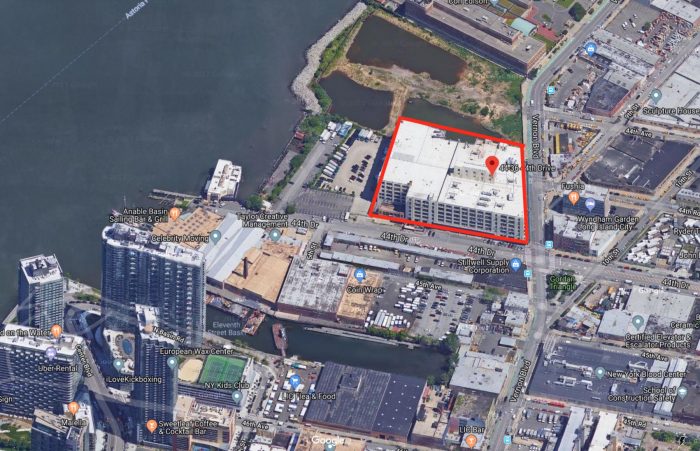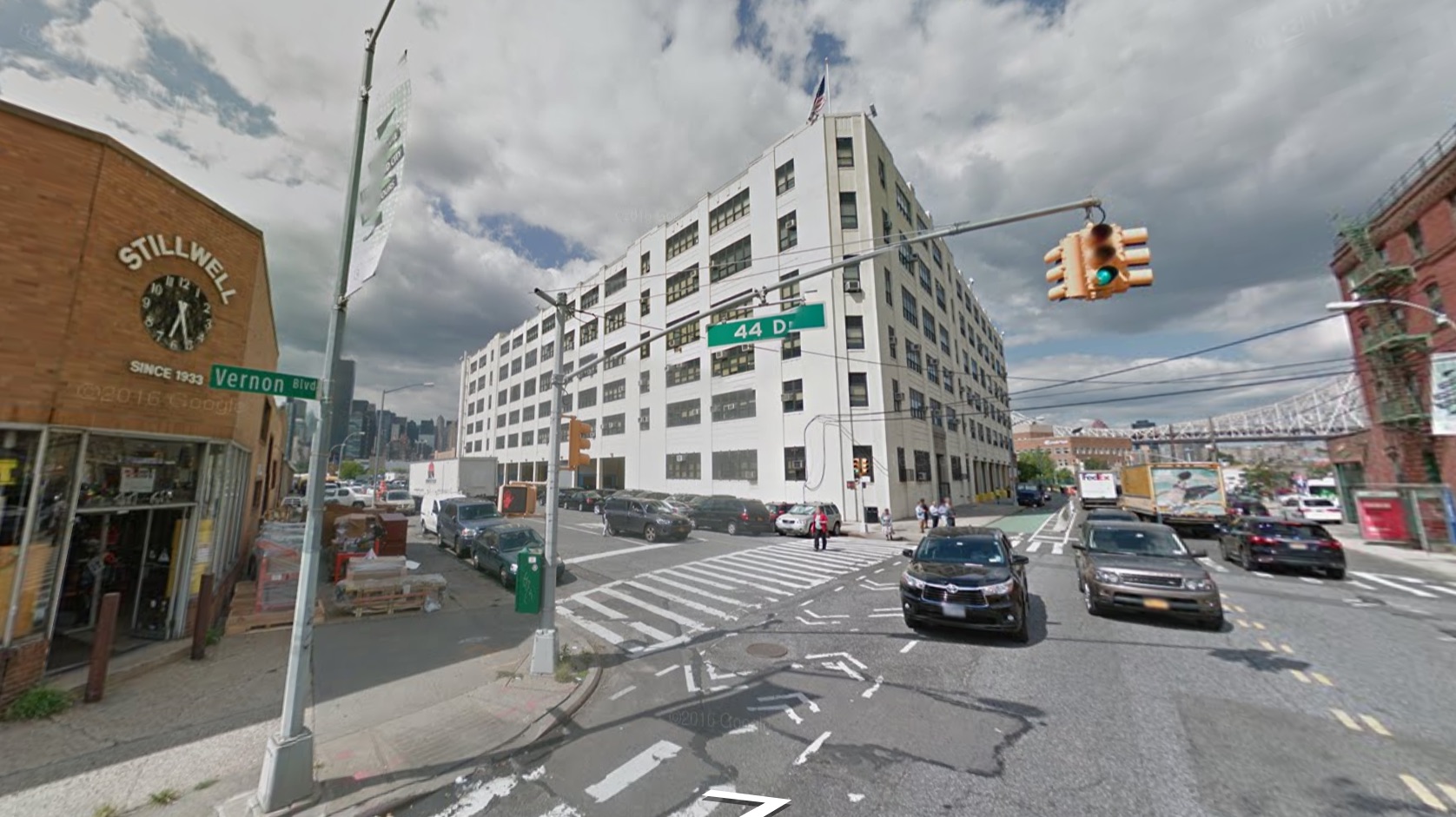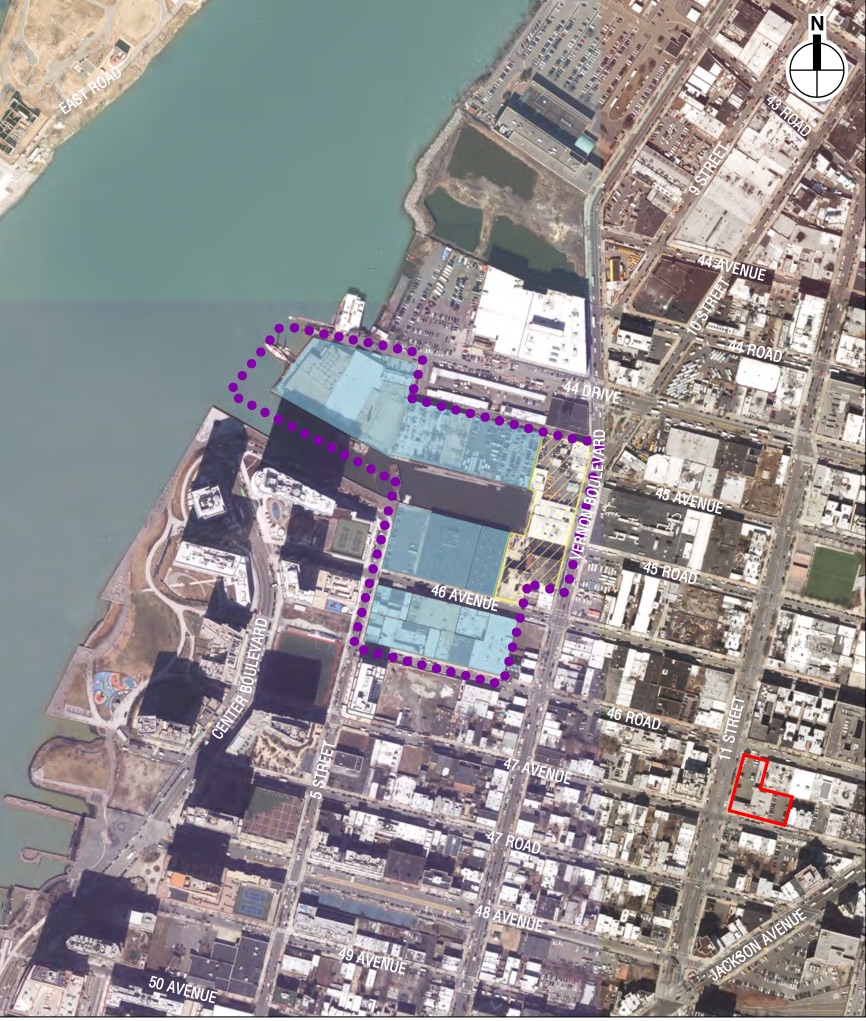
44-36 44th Drive, outlined in red. The site was one of three listed by the city for a potential life sciences hub location. (Google Maps)
Jan. 24, 2018 By Nathaly Pesantez
A city-owned site in Long Island City could potentially see an applied life sciences hub on it, as it’s one of several city-owned locations the New York City Economic Corporation offered up for organizations to develop a life science and research center within New York City.

44-36 44th Drive (white building). Google Maps.
The site at 44-36 44th Drive in Hunters Point was listed in the EDC’s Request for Expressions of Interest as a possible location for a world-class life sciences cluster for the city. The RFEI, released yesterday, aims to make New York City a global leader in this rapidly-growing industry, with the city investing up to $100 million in capital funding to see the project through.
The 44th Drive location has a lot area of 90,400 square-feet, and is currently used by the Department of Education and the Department of Citywide Administrative Services within two six-story buildings.
The Hunters Point site, if selected by interested organizations, could see a large-scale research and development center with space to bring in small but steadily growing science companies and designed in a way that encourages collaboration across life sciences companies and groups in the city.

The two sites slated for development by the EDC.
The 44th Drive location is directly next to the EDC/TF Cornerstone site, where 1,000 units, a school, 500,000 square feet of commercial and industrial space, and an acre of public space are expected to be built on two city-owned parcels.
The location is also just a block away from the proposed Special Anable Basin District, which, if approved by the city, would upzone a 15-acre area and allow for a 65-story tower, thousands of square feet of industrial space, and nearly 5,000 residential units to be built around the Anable Basin.

Proposed Anable Basin Special District.
Although the city offered their tracts of land in Long Island City, Kips Bay, and East Harlem for the job, respondents are actually strongly encouraged to propose privately-owned properties for consideration. Applicants can also propose retrofitting an existing building rather than a new ground-up development.
The RFEI comes as the LIC Partnership announced its goal to develop a business plan to see the feasibility of bringing a life sciences and research innovation cluster in Long Island City. The partnership received $100,000 in funding from Governor Cuomo to brainstorm the plan.
“It really is about creating a cluster,” said Elizabeth Lusskin, president of the LICP. “In New York we have all this great research going on, which gets commercialized elsewhere. If you’re going to have a real innovation hub, you need to have a means of production.”
The RFEI is an extension of Mayor de Blasio’s LifeSci NYC plan, a decade-long, $500 million commitment to bolster the city’s global reputation in life sciences and innovation.
“New York City is well-positioned to become a global destination for research and development, with the largest concentration of academic medical centers in the country and approximately $1.6 billion in annual National Institutes of Health funding,” the EDC said. “The City is also home to more than 7,000 university graduate students and post-doctoral researchers prepared to lead the next generation of life sciences research.”
Responses are due no later than May 17, 2018, after which the EDC will evaluate the responses and released a subsequent Request for Proposals.
